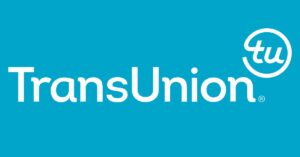In the aftermath of the 2008 housing crisis, Congress imposed consumer protection rules on mortgage loan originators that made the underwriting process more complicated and riskier. Financial problems with government and agency mortgage purchasers also resulted in extra scrutiny of the secondary market and an uptick in indemnification and repurchase actions. Finally, the Consumer Financial Protection Bureau (CFPB) added exam costs and enforcement risks to the mix.
In this environment, it became important for mortgage underwriters to have clear guidance and, whenever possible, the certainty that if they followed the rules, their companies would not be subjected to unreasonable indemnification, repurchase requests or CFPB enforcement actions. There has been notable progress on many of these fronts in the past few years, but some issues still remain.
It is true that new rules, regulations and procedures introduced to the mortgage process in an effort to fix issues that led to the housing crisis have brought increased costs and processing time plus uncertainty around the underwriting process. Recent initiatives such as Fannie Mae’s Day 1 Certainty and the loan-review system introduced by the Federal Housing Administration (FHA) have the potential to bring more predictability to the process.
Issues still remain, however, such as uncertainty around enforcement of CFPB consumer-protection rules and regulations and issues with lawsuits brought under the False Claims Act. These problems don’t just impact lenders and underwriters, either. Mortgage originators who have their loans held up, rejected or repurchased also feel the squeeze. These issues affect the entire industry.
Liability relief
One success from the issues that arose out of the housing crisis is the increased use of technology in the mortgage process. Day 1 Certainty is a recent effort by Fannie Mae to provide relief to lenders and mortgage companies from future representations and warranties liability with regard to key loan-data components of the mortgage origination process. The program provides income, employment and asset validation through Fannie’s automated underwriting systems to reduce repurchase risk due to issues with data quality.
Fannie rolled out Day 1 Certainty initially as a pilot program to several lenders with income validation. By the end of 2016, employment and assets validation also became available. Today, Fannie Mae’s Day 1 Certainty is available to any lender who is willing to opt in.
A benefit of this approach is to reduce risk and create speed, simplicity and overall certainty in the mortgage process. By allowing lenders to use electronic data — instead of collecting income documentation like pay stubs, W2s and bank or investment statements — it is possible to create a better loan and a better borrower experience.
Day 1 Certainty has reps and warranties relief for appraised values as well. With the use of the Fannie Mae Collateral Underwriter (CU) tool, appraisals with a CU risk score of 2.5 or less have the appraised value represented and warranted. Less time is spent on these appraisals, so more time can be spent on higher-risk appraisals that have a CU score of 2.6 or higher.
Lenders and mortgage companies are dipping their toes into Day 1 Certainty slowly.
In addition, with the Property Inspection Waiver reflected in the Desktop Underwriter (DU) findings on refinance transactions, borrowers are not required to pay or wait for an appraisal, which simplifies the process and lowers the cost. Lenders also receive representation and warranty relief on the property value entered on the application, condition and marketability.
Unfortunately, lenders and mortgage companies are dipping their toes into Day 1 Certainty slowly so far. One reason may be that it has taken a lot of effort for those companies that have signed up. The successful integration of loan origination systems (LOSs) with Fannie Mae and the validation services that provide income and employment verification are integral to success.
Changing the mindsets of originators about getting documentation validated rather than collecting documentation also can be a challenge. Plus, it is critical to test and re-test (and re-test) the LOS integration before rolling it out to the entire company.
Reportedly, however, for those making it work, Day 1 Certainty yields strong results — both in terms of reduced repurchase liabilities and a streamlined underwriting processing. At a minimum, it is a good option for a mortgage company’s underwriters to have available.
Transparency and clarity
In response to concerns about lack of transparency and clear standards regarding underwriting violations, the FHA rolled out its defect “taxonomy.” The taxonomy is an effort to provide a transparent and more objective identification of types of underwriting defects and their sources, causes and severities. Problems are separated by categories between minor faults and more serious defects that have indemnification consequences.
Serious problems include fraud or misrepresentation, statutory violations, significant eligibility or insurability issues and inability to determine or support loan approval — listed as Tier 1 issues — as well as material errors that impact loan approval and any failures to comply with FHA policy (the Tier 2 issues). Tiers 3 and 4 include lower-level problems, such as minor errors or issues, failure to comply with guidelines by a small degree and other minor errors that would still result in the loan being approvable.
The taxonomy was part of a broader FHA effort to provide lenders with more assurance that if they comply with the important and material FHA underwriting requirements, they will not be second- guessed for minor technical violations. A critical component of this is FHA’s implementation last year of its “Loan Review System.”
One concern still facing lenders and mortgage companies has been a perceived lack of guidance on what the CFPB expects.
Lenders have generally been pleased with the system. The most positive part is that it provides a formal appeal process to rebut allegations of lender error, which can be taken all the way to Washington, if necessary. In the past, it could be difficult for lenders to escalate findings to the FHA headquarters for review.
Unfortunately, a major cause of lender apprehension regarding FHA has not been caused by FHA, but by actions brought by the Department of Justice under the False Claims Act, which has been used to impose significant fines, generally on larger FHA lenders. This issue is commonly cited by banks as a major factor in their decision to reduce FHA loan originations or impose credit overlays.
There are some signs of potential change on the horizon, however. Ben Carson, secretary of the U.S. Department of Housing and Urban Development, appears supportive of changes to the False Claims Act. In addition, Brian Montgomery, the nominee for FHA commissioner, has said the FHA should treat lenders more like “partners than adversaries.”
Balanced enforcement
One concern still facing lenders and mortgage companies has been a perceived lack of guidance on what the CFPB expects from them with regard to specific rules. The TRID consumer-disclosure rules, for example, initially contained issues such as the so-called “Black Hole” — a potential timing conflict with disclosures that could leave lenders liable despite following the rules — and a lack of a formal safe-harbor transitional period for compliance.
The change in administration has brought a change in regulatory focus, however. Notably, Mick Mulvaney, new CFPB acting director, took a different approach last December when rolling out the new data requirements for the Home Mortgage Disclosure Act, putting in place a full-year safe harbor and seeking comments on the new requirements.
The risk of CFPB enforcement action is of particular concern for smaller independent mortgage bankers, or IMBs, which do not have the same financial resources to spread compliance costs over larger loan volumes or absorb large fines. Moreover, smaller IMBs often have not had as much interaction with the CFPB — in contrast to their state regulators, which they more regularly interact with. This often makes it more difficult for IMBs to understand the CFPB’s thinking on compliance issues.
This is especially true when it comes to what is often referred to as the CFPB’s “enforcement first” policy, where it imposes fines and enforcement actions without first giving lenders or financial institutions a chance to correct the issue. In contrast, bank and credit union regulators generally work with the entities they regulate, identifying concerns and giving them a chance to correct the problem. The goal should be working with lenders to get them to comply with rules, not just punishing infractions with fines.
A broader question is whether or not smaller IMBs should even be subject to CFPB exams or enforcement in the first place. IMBs are subject to CFPB supervision as well as exam and enforcement regulation by the states in which they originate or service loans. The Treasury Department pointed out this dual-compliance burden last year. This past March, Mulvaney also emphasized that the CFPB should defer more to primary regulators (banking regulators or state regulators). With the administration’s emphasis on deregulation, it is possible this issue could be resolved in the near future.
• • •
Mortgage lenders should have a reasonable expectation that there is predictability and certainty when they do the loan underwriting job well. Mortgage professionals should keep in mind — and mortgage programs should reflect — the importance of this reliability and predictability. Fortunately, strides have been made recently, but more can be done. Ultimately, it is borrowers, as well as loan originators, who benefit when this loan predictability becomes a reality.
Author
-

Scott Olson is executive director of the Community Home Lenders of America (CHLA). CHLA is the only national association exclusively representing independent mortgage bankers and is comprised of small and midsized community-oriented mortgage lenders and servicers.





